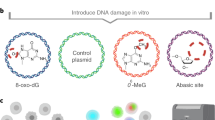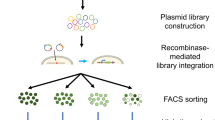Abstract
Tumor progression is often characterized by the cumulative loss of crucial cell cycle control genes and the concomitant loss of genome stability. Progressed tumors are often resistant to conventional therapies. Gene-transfer of key growth-regulatory genes, such as the p53 gene, is one potential approach to treating advanced tumors. To this end, we have produced high-titer retroviruses, based on the pCL vector system, which encode a chimeric protein consisting of human wild-type p53 and the green fluorescent protein (wtp53GFP). The fluorescent wtp53GFP protein and the wild-type p53 protein are recognized equally by several monoclonal p53-specific antibodies, have similar half-lives and function comparably in transactivating a p53-responsive element as well as in suppressing the growth of tumor cells. Additionally, due to its fluorescent nature, wtp53GFP facilitates the direct identification of cells expressing the p53 fusion protein. Combining the features of the pCL retroviral production system with the highly visible green fluorescent protein provides a potent tool for the delivery of p53 into cells and the subsequent detection of the protein, both in vitro and in vivo.
This is a preview of subscription content, access via your institution
Access options
Subscribe to this journal
Receive 50 print issues and online access
$259.00 per year
only $5.18 per issue
Buy this article
- Purchase on Springer Link
- Instant access to full article PDF
Prices may be subject to local taxes which are calculated during checkout
Similar content being viewed by others
Author information
Authors and Affiliations
Rights and permissions
About this article
Cite this article
Norris, P., Haas, M. A fluorescent p53GFP fusion protein facilitates its detection in mammalian cells while retaining the properties of wild-type p53. Oncogene 15, 2241–2247 (1997). https://doi.org/10.1038/sj.onc.1201406
Received:
Accepted:
Issue Date:
DOI: https://doi.org/10.1038/sj.onc.1201406
Keywords
This article is cited by
-
Distinct spatiotemporal dynamics of mammalian checkpoint regulators induced by DNA damage
Nature Cell Biology (2003)
-
Laser fluorescence bronchoscopy for detection of fluorescent reporter genes in airway epithelia
Gene Therapy (2002)
-
Inhibition of T-Cell Acute Lymphoblastic Leukemia Proliferation In Vivo by Re-expression of the p16INK4a Tumor Suppressor Gene
Neoplasia (1999)



